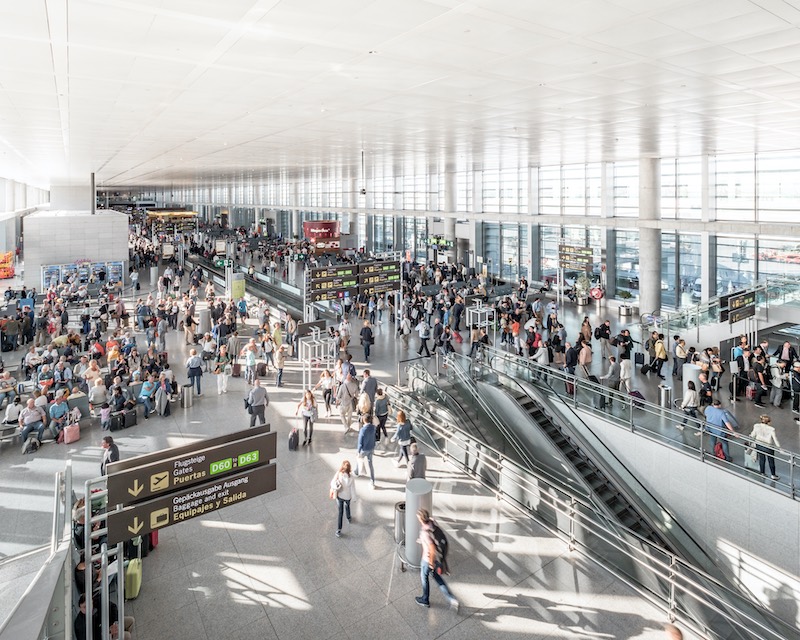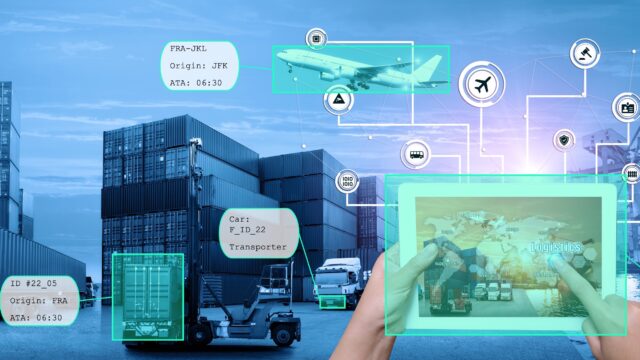
2021 Airport Covid Outlook
Three key trends that will shape a better rebuild
Covid-19 has brought aviation to it’s knees. However, in the early days of the pandemic almost a year ago, we knew much less about the virus’ propagation behavior and potential countermeasures than we do today.
In a series of articles, we tried to establish suitable actions for airports to both increase the safety of travelers and staff as well as boost business resilience.
Many of the measures suggested are now commonplace, such as plexiglas shields at counters, ubiquitous hand sanitizers, rigorous queue spacing and increased cleaning intervals. Equally, aviation businesses have been forced to start rigorous cost reduction and spend review programs, going through painful rightsizing processes. Some also have been forced to seek, or are still seeking, public cash injections to safeguard survival.
On the other hand, some of the measures we declared necessary have not yet come to fruition at scale. In particular, this includes Covid-tests at airports – which are not working as quickly as we had envisaged, as well as common standards on travel requirements – which we are still far removed from.
Many of the measures suggested are now commonplace – some have not yet come to fruition at scale
In this article, we’d like to revisit three key trends that will play a vital role to enable the industry to return to the skies.
1. Rebuilding Trust by Offering Biosecurity via a Touchless Customer Journey
Rebuilding trust, i.e. delivering an airport experience that makes customers feel safe is the paramount starting point for any traffic recovery. Perception is reality, and in this case, it’s a subjective view on infection risks that will unlock pent-up leisure travel demand.
This means, changes to the pre-Covid customer experience must be notable and readily apparent. A big factor in delivering tangible change is to reduce necessary touchpoints (i.e. any finger to infrastructure contact) to the bare minimum. On top, this needs to be a consistent experience throughout all airport processes from car park or train station to the plane.
Fortunately, technologies supporting this principle are already in use throughout our daily lives and also at airports. The challenge is to integrate them into a seamless journey. For example, mobile pay or mobile barcode apps can avoid contact with carpark payment machines, but also serve to initiate self-service bag drop processes without touching screens. Bag tag scanners at bag drop injection points must then be changed to a fixed installation, rather than being handheld, of course. Boarding card readers prior to entering security are already touchless, but this could be optimized with biometric recognition, same as for the boarding process. Finally, automated solutions play an important part in reducing the buildup of queues. In addition, commercial apps for in-store service or payments aiming to reduce the need for direct shop attendant contact help drive non-aviation revenue.
So far, use of travelers’ biometric identification extends often to governmental border control authorities, with airline and airport programs mostly on a voluntary basis. The basis for more widespread customer participation, however, already exists: at least all EU passports feature biometric information.
But this is not the main obstacle for biometric identification. In fact, many customer groups are by now very much used to uploading a passport scan along with a selfie to gain access to a provider’s services (e.g. carsharing or fintech apps). The key for scaling biometric solutions along the airport process chain, therefore, is a robust data security / ID-management solution customers can happily trust. Again, trust is key for recovery – and if the industry seizes this opportunity to embrace and employ biometrics, few customers will want to miss the joy of a seamless experience even once we reach a new state of normal.
The crisis’ accelerating effect on more widespread implementation of a range of biometry and automation solutions at airports may be one of its few, if any, positive aspects.
Click here for our related Airport Operations service.
2. Increasing Airports’ Business Resilience for Improved Reaction to Market Volatility
Beyond promoting customers’ trust, touchless airport processes of course also drive efficiency gains and improve infrastructure utilization. This is particularly important as airports are under increased market pressure from airlines seeking discounts and lower airport charges. Whilst many airports have focused on mothballing terminals and shedding legacy staff costs during lockdown, rebuilding operations the right way during ramp up bears substantial cost reduction potential. And automated, touchless solutions are a powerful lever in the process.
Both the public and airline customers will be looking to airports to build back in a more lean, green and agile way. But a large part of airports’ cost structures are financing-related and thus less flexible. The main focus therefore lies on maintenance, IT, airside and terminal operations. These areas can often still deliver significant savings by reviewing staffing levels, harmonizing systems as well as integrating control centers and smart automation and data solutions.
Without having completed this homework first, airports cannot expect political support for additional public funding. Likewise, having their house in order cost-wise makes airports much more attractive to privatization. For many regional airports, this will be a likely future capital source given the amount of government money already spent on economic stabilization.
Customers will be looking to airports to build back in a more lean, green and agile way
3. Developing Common Regulatory Standards Allowing Reliable Travel Plans
Amid new variants of the virus increasing their footprint across borders, political leaders have not been able to align and agree on common prevention measures and requirements for travelers (some not even within single countries). This has a particularly depressing effect on demand in markets without a substantial domestic share, e.g. individual EU countries, Singapore, UAE, etc.
Mostly, negative pre-departure test must be presented by potential passengers, however the details differ greatly. This means airlines are forced to navigate a multitude of required pre-boarding checks at risk of serious fines. Equally, some\ncountries’ test documentation requirements practically impede travel. For example, a negative test no more than four hours old will be hard to obtain for early morning departures.
For airports, the consequence is that local test sites must be able to deliver sufficient capacity, operating hours and turnaround times, to enable passengers to board their intended flights. Smart solutions securely linking passengers’ bookings or boarding passes with their tests avoid losing too much time, as customers can wait for their results airside.
Blockchain technology is one approach to ensure data security when matching test and boarding pass IDs. However, a joint industry approach towards a common regulated standard for such solutions would be needed but appears some time away.
An idea to address the brief period of validity for tests could be for airports to pair with laboratory specialists and offer a downtown test center. This way, customers could be sure to find a compliant testing facility in time. Airports, in turn, would ensure they retain control of the process and, more importantly, data security. Equally, test confirmation could more easily be matched to boarding passes and integrated into the boarding process.
Airport test centers must deliver sufficient capacity and turnaround times at all hours
Similarly, differing views on lifting restrictions for vaccinated persons and how to document and police this are emerging between countries. Again, the range is broad – from stamps on paper (Germany) to online ‘vaccination passports’ (Denmark), just to name two examples. In an ideal world, this would be a prime opportunity for regulators to embrace technology in order to improve peoples’ lives and help the economy. Whether the announced EU-plans on vaccination passports will be a sustainable solution enabling travel remains to be seen.
Looking Ahead – Changing Priorities
The immediate factor for winning the race against Covid- mutations are of course individual/at home behavior as well as a swift vaccine roll-out. These are thus rightly at the forefront of policymakers’ minds. But especially for aviation and its role as a true globe-spanning economic facilitator, it is vital to look ahead, as the scale and speed of recovery depend heavily on regulation. In the meantime, rebuilding their operations leaner, greener, and more agile as well as implementing seamless touchless customer journeys should be top of the agenda for airports.




